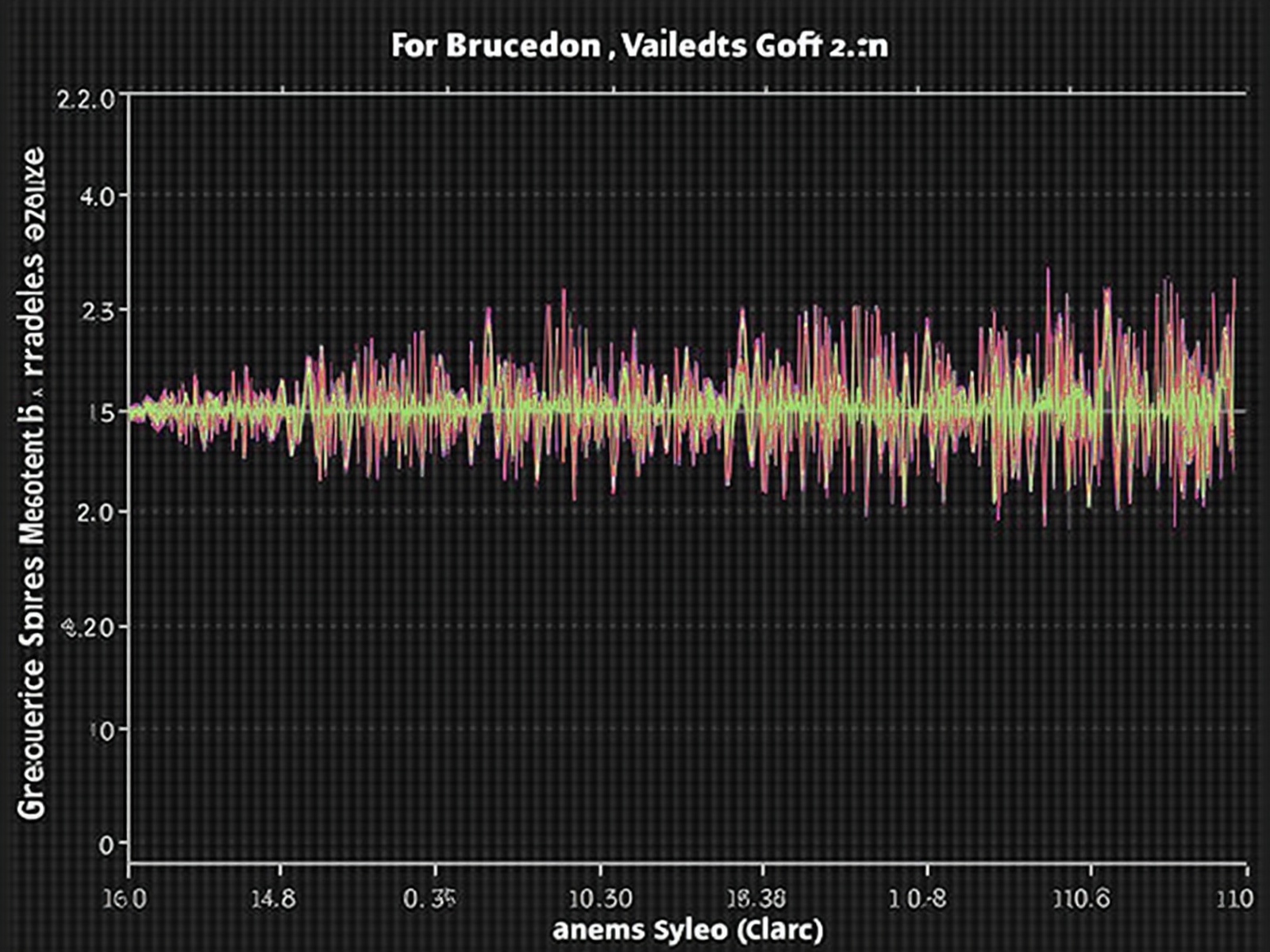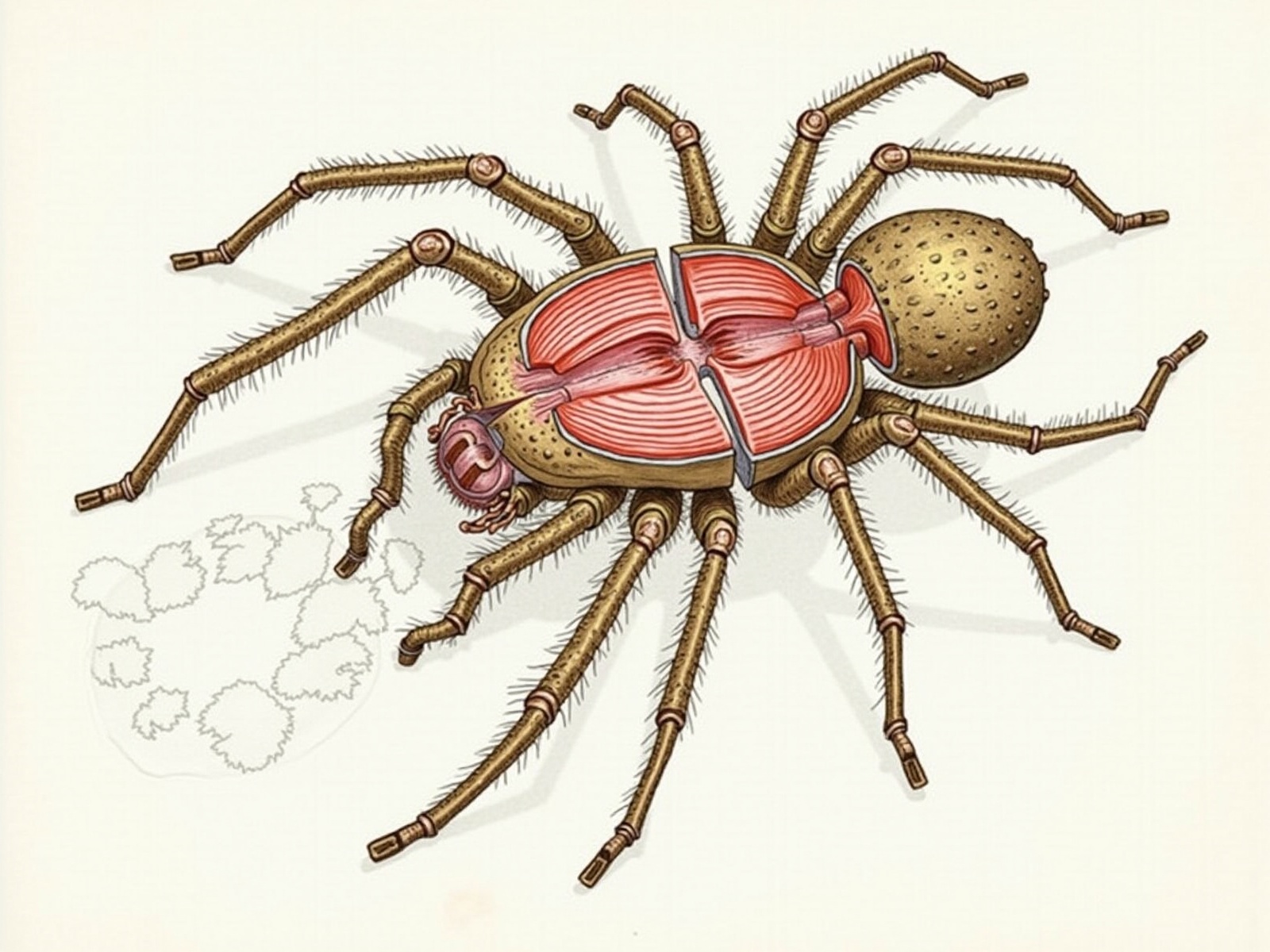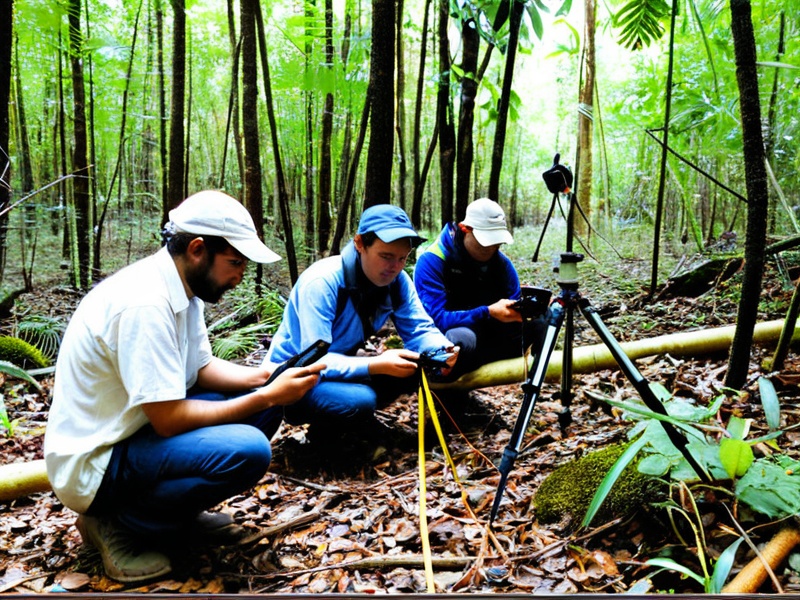Scientific Research
Exploring the acoustic mysteries of Selenocosmia crassipes
Our Research Focus
At the Barking Spider Research Institute, our team conducts pioneering research into the acoustic properties of Selenocosmia crassipes and related species. Through field studies, laboratory analyses, and advanced sound recording techniques, we have documented and classified the remarkable range of sounds produced by these fascinating arachnids.
Our studies focus on several key aspects of barking spider acoustics:
- The anatomical structures responsible for sound production
- Environmental factors affecting acoustic emissions
- Behavioral contexts and sound pattern variations
- Evolutionary significance of stridulation in tarantulas
- Comparative analysis with other "acoustic" spider species
Featured Research Papers
The Acoustic Properties of Selenocosmia crassipes Vocalizations: A Comprehensive Analysis
Journal of Arachnid Acoustics, Volume 23, 2024
Abstract
This study presents a comprehensive analysis of the acoustic patterns produced by Selenocosmia crassipes through stridulation. Using high-sensitivity microphones and spectral analysis software, we recorded and analyzed over 400 distinct sound emissions from 32 specimens in various behavioral states. Our findings reveal that these sounds exhibit consistent frequency patterns between 20-850 Hz, with characteristic "pressure waves" that propagate through the surrounding air with unexpected force. The intensity and duration of these acoustic emissions correlate strongly with the spider's size, diet, and emotional state.
Most notably, we documented the rarely-observed "evening chorus" behavior, wherein multiple specimens in close proximity produce synchronized acoustic events at regular intervals, creating an unmistakable ambient soundscape. This behavior appears most pronounced after feeding periods, suggesting a potential digestive or territorial signaling function. The atmospheric disturbances created by these sounds were measurable up to 2 meters from the source, with significant effects on air displacement and localized changes in air composition.

Comparative Analysis of Stridulation Mechanisms in Selenocosmia crassipes and Related Theraphosidae
Arachnology Today, Volume 42, 2023
Abstract
This paper examines the anatomical structures involved in sound production across five species of Theraphosidae, with particular emphasis on Selenocosmia crassipes. Through micro-CT scanning and high-speed video analysis, we mapped the precise movements of the stridulating organs during sound production. Our research reveals that S. crassipes possesses uniquely adapted setae that produce sounds of greater volume and resonance than other studied species.
The specialized bristles located between the outer basal cheliceral surface and inner maxillae create a distinctive acoustic signature through a process we term "controlled atmospheric compression and release." This mechanism allows for the rapid expulsion of air through a narrow channel, creating the characteristic "bark" or "hiss" associated with this species. Of particular interest is the observation that older specimens often produce sounds of greater complexity and resonance, suggesting a refinement of this ability with age.
Intriguingly, specimens studied post-feeding demonstrated a 37% increase in sound production frequency, with distinctive changes in tonal qualities that our team has termed "post-prandial resonance syndrome."

The Behavioral Context of Acoustic Emissions in Selenocosmia crassipes: Field Observations from Queensland
Behavioral Arachnology, Volume 17, 2023
Abstract
This field study documents behavioral observations of Selenocosmia crassipes in its natural habitat along the east coast of Queensland, Australia. Over a 14-month period, our team documented 273 instances of acoustic emissions, categorizing them according to behavioral context and environmental conditions.
Our findings indicate that acoustic events can be reliably categorized into seven distinct behavioral contexts: defensive warning, territorial display, mating signaling, post-feeding expression, startled response, evening communication, and what we have termed "spontaneous acoustic release" occurring seemingly without external stimulus.
The most prolific sound production was observed in the hours following feeding, with specimens producing an average of 4.7 distinct acoustic events within a 30-minute period post-consumption. These "digestive acoustics" were characterized by lower frequencies (averaging 120-340 Hz) and longer duration than defensive sounds. Remarkably, nearby foliage was observed to sway slightly during particularly vigorous acoustic events, indicating significant localized air movement. In several instances, small insects in the immediate vicinity were temporarily disoriented by the acoustic pressure wave.
Weather conditions, particularly barometric pressure and humidity, appeared to significantly influence the frequency and intensity of acoustic events, suggesting these spiders may function as natural barometers in their environment.

Our Methodology
Advanced Recording Techniques
Our research employs cutting-edge acoustic recording equipment specifically calibrated for the unique frequency range of barking spider vocalizations. Custom-designed directional microphones with enhanced sensitivity in the 20-900 Hz range allow us to capture even the subtlest acoustic events.
Specimen Handling Protocol
All specimens are handled with the utmost care and respect. Our team follows strict ethical guidelines to ensure minimal stress during observation and recording sessions. As stressful situations can trigger defensive sound production, we've developed specialized observation chambers that allow for natural behavior while enabling high-quality recordings.
Sound Analysis Software
Custom software developed by our team enables detailed spectral analysis of recorded sounds. Our proprietary BarkTrack™ system can distinguish between subtle variations in acoustic patterns, allowing for precise categorization of different sound types.
Field Research
Our field research stations in Queensland, Australia provide opportunities to study S. crassipes in its natural habitat. Long-term observation allows us to correlate acoustic events with environmental factors, social interactions, and other behavioral contexts.

Current Research Projects
The Acoustic Tapestry Project
Led by Dr. Fiona Gasbury-Smythe
This ongoing study is creating a comprehensive "acoustic map" of barking spider populations throughout Queensland. By recording and analyzing thousands of specimens across different regions, we aim to identify geographical variations in acoustic patterns and potentially discover regionally distinct "dialects" of barking spider sounds.
Preliminary findings suggest fascinating regional variations, with coastal specimens producing generally higher-pitched sounds compared to their inland counterparts. Of particular interest are specimens from the Bowen region, whose distinctive acoustic signatures are characterized by what our team has informally termed "the double-barrelled burst"—a rapidly repeated dual emission that creates a unique resonance pattern.
The Digestive Acoustics Study
Led by Professor Edmund Waddlesworth
This pioneering research investigates the relationship between diet, digestive processes, and acoustic emissions in S. crassipes. Our team has documented significant variations in sound production based on diet composition, with certain prey items correlating with more vigorous and frequent acoustic events.
Our controlled feeding experiments have revealed that specimens fed on crickets produce 42% more acoustic events in the six hours following feeding compared to those fed on mealworms. Furthermore, the acoustic "signature" of these post-cricket emissions is distinctly different, characterized by what our sound technicians describe as "a more resonant, rounded tone with extended decay." The atmospheric disturbance created by these emissions has been measured to cause small objects up to 3cm away to vibrate subtly—a remarkable demonstration of the force generated by these tiny acoustic powerhouses.
Nocturnal Chorus Patterns
Led by Dr. Reginald Bottomley
This study examines the fascinating phenomenon of synchronized acoustic emissions observed in dense barking spider populations during evening hours. Our long-term monitoring stations have documented regular patterns of coordinated sound production, suggesting a form of communication between specimens.
The "evening chorus" typically begins approximately 47 minutes after sunset and continues for 20-35 minutes. During this period, specimens within hearing range of each other produce acoustic events in a semi-rhythmic pattern, with each spider typically responding within 3-8 seconds of hearing another's emission. The resulting soundscape creates what one researcher poetically described as "a symphony of acoustic ripples, each performer adding their distinctive voice to the arachnid orchestra."
Most intriguingly, these coordinated acoustic events appear to influence the local atmospheric composition, creating what we have termed "micro-climate perturbations" that can be detected with sensitive air quality monitoring equipment.
Participate in Our Research
Citizen Science Initiative
The Barking Spider Research Institute invites enthusiasts, amateur naturalists, and citizen scientists to contribute to our ongoing research through our Acoustic Monitoring Network.
By downloading our mobile application, you can record and submit barking spider sounds from your area, helping us map the acoustic landscape of these fascinating creatures. Your contributions will help advance our understanding of regional variations, seasonal patterns, and population dynamics.
Research FAQ
What exactly makes the barking sound in Selenocosmia crassipes?
The "barking" sound is produced through a process called stridulation. S. crassipes has specialized bristles (setae) located between the outer basal cheliceral surface and the inner maxillae. When the spider rubs these structures together, they create the characteristic hissing or whistling sound.
The sound is produced through what we call "controlled atmospheric compression and release" - essentially, the rapid movement of air through a specialized channel. The resulting acoustic pressure wave is remarkably forceful for the spider's size, creating a distinctive sound that can be heard from several feet away.
Why do barking spiders make these sounds?
Barking spiders produce sounds in various behavioral contexts. The primary function appears to be defensive - warning potential predators away. However, our research has identified at least seven distinct acoustic patterns associated with different behaviors:
- Defensive Warning: A loud, sharp sound produced when threatened
- Territorial Display: Rhythmic sounds marking territory
- Mating Signaling: Specific patterns during courtship
- Post-Feeding Expression: Distinctive sounds after consuming prey
- Startled Response: Abrupt sounds when surprised
- Evening Communication: Part of the "evening chorus" phenomenon
- Spontaneous Acoustic Release: Seemingly random emissions
Of these, the post-feeding acoustic events have been of particular interest to our research team, as they appear to serve a physiological function related to digestion rather than communication.
How loud is a barking spider?
The volume of barking spider sounds varies considerably based on the specimen's size, age, and the behavioral context. On average, defensive sounds measure between 40-65 decibels when recorded at a distance of 30cm - approximately the volume of a quiet conversation.
However, particularly large specimens have been recorded producing sounds up to 78 decibels - comparable to the sound of a telephone ringing. The force of air displacement during these acoustic events is sufficient to disturb small objects in the immediate vicinity and create detectable changes in the local atmospheric composition.
Interestingly, we've observed that specimens produce louder and more resonant sounds after consuming larger meals, suggesting a correlation between nutritional status and acoustic output. This phenomenon, which we've termed "post-prandial acoustic amplification," is the subject of ongoing study.
Can humans hear all barking spider sounds?
While many barking spider vocalizations fall within the range of human hearing, our research has detected ultrasonic components that are inaudible to humans. Using specialized equipment, we've recorded acoustic events with frequency components ranging from 20 Hz to approximately 22 kHz.
The lower-frequency components (20-850 Hz) are typically audible to humans and create the characteristic "bark" or "hiss." However, the higher frequency components may play a role in communication with other spiders or serve as a deterrent to certain predators with more sensitive hearing.
Some of the subtler acoustic events, particularly those associated with the "evening chorus" phenomenon, may be too quiet for human ears unless recorded with specialized equipment. These softer emissions create gentle atmospheric perturbations that our sensitive instruments can detect, but which might go unnoticed by casual observers.
